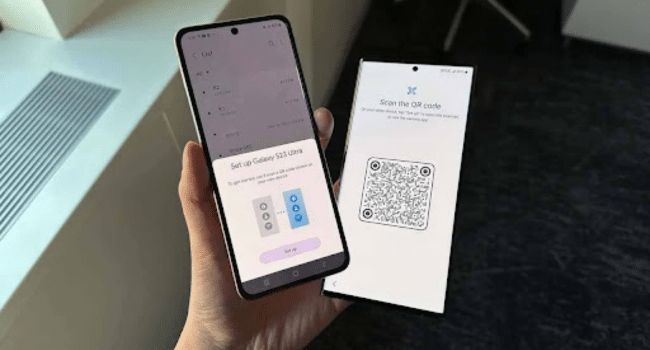Table of Contents
When it comes to transferring data to a Samsung Galaxy phone using Smart Switch, one common question arises: How long will it take? The answer lies in understanding the impact of data size. Smart Switch facilitates the seamless transfer of various content, including apps, photos, contacts, messages, and files, from both Android and iOS devices to Samsung Galaxy phones. However, the transfer duration isn’t fixed; it directly correlates with the volume of data being moved.
In this article, we delve into the factors influencing Smart Switch transfer times and provide insights into optimizing the process. Nerd Plus Art explores the factors affecting Smart Switch transfer times, crucial for seamless data migration to Samsung Galaxy phones.
Data Size Matters: Deciphering Transfer Speeds
The size of your data significantly influences the speed at which Smart Switch can transfer it. Larger data sets naturally require more time to transfer, while smaller ones can be processed more rapidly. Recognizing this correlation is essential for setting realistic expectations and effectively planning your transfer. Whether you’re migrating extensive media libraries or just a few files, understanding the impact of data size ensures a smoother transition to your Samsung Galaxy phone.
App Data: Accelerating or Hindering Transfer?
Apps play a pivotal role in transfer speeds due to their varied data complexities. Smaller apps tend to transfer quickly, but larger ones, laden with extensive data, can significantly slow down the process. To optimize efficiency, consider uninstalling unnecessary apps prior to transfer. This simplifies the procedure and reduces the burden on Smart Switch, ensuring a smoother and swifter transition to your Samsung Galaxy phone.
Photos and Videos: Gauging Transfer Efficiency
Transferring photos and videos entails managing large media files, impacting transfer efficiency. High-resolution images and videos, in particular, require more time for transfer compared to smaller files. To expedite the process, it’s beneficial to organize and optimize your media library beforehand. This not only reduces the overall data volume but also streamlines the transfer, ensuring a quicker and smoother transition to your Samsung Galaxy phone.
Contacts and Messages: Speeding Up Sync Processes
Although contacts and messages appear small individually, they cumulatively impact transfer duration. Smart Switch meticulously processes each contact and message, which can prolong the sync process, especially with extensive lists or threads. Clearing unnecessary contacts and messages before transfer can expedite the sync, reducing the overall processing time. This optimization ensures a quicker and more efficient transition to your Samsung Galaxy phone.
Optimization Tips: Maximizing Smart Switch Efficiency
Maximizing Smart Switch efficiency involves various strategies, such as ensuring both devices have sufficient battery life and stable internet connections. Additionally, closing unnecessary background apps and freeing up storage space on both devices can enhance overall transfer speeds. Implementing these optimization tips can help expedite the Smart Switch transfer process.
Understanding data size’s impact on Smart Switch transfer times is vital. By recognizing this and optimizing, users ensure efficient migration to their Samsung Galaxy phone. Additionally, Smart Switch necessitates a stable WiFi connection, emphasizing the need for preparation and optimization for a seamless transition.
Read more on KulFiy
How to Transfer Contacts from iPhone to Android
Discover the World of InfiniBand and Mellanox – Everything You Need to Know
